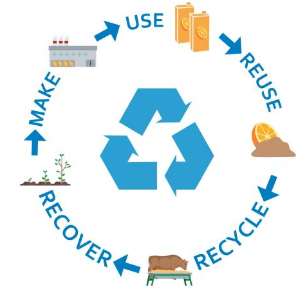Valuing Circularity in Sustainable Food Systems
Written by: Lara Moody | December 6, 2021

I recently co-authored “The Value of Circularity in Sustainable Food Systems” with Anton van den Brink from the European Feed Manufacturers’ Federation (FEFAC). In the article, we looked at existing environmental data points linked to coproduct and by-product use as well as potential metrics for assessing circularity. The challenge with the current datapoints is that they only look at avoided greenhouse gas emissions and avoided corn production. They do not explore the broader benefits likely derived from using coproducts and by-products, for example, a potentially lower energy or water input when creating feed from already processed foodstuffs or the recycle of nutrients back into the crop production system through animal manure.
Idealistically, circular systems operate where waste no longer exists, material loops are closed, and products are recycled indefinitely, but in reality, materials degrade over time and some quantity of new materials and energy must be injected into any circular material loop to overcome these losses.
A circular economy can be used as a benchmark to measure progress on a scale ranging from linear at one end to perfectly circular at the other. However, assessing the circular economy within food and agricultural systems is challenging because both material and energy flows must be coupled with production, processing, distribution and consumption.
Circularity will continue to evolve as an indicator within the broader sustainability discussion. Relative to the biologic, interconnected and complex nature of food and agricultural systems, advancing our ability to measure and assess those systems’ circularity is paramount to gaining sustainability benefits of a circular economy. The use of coproducts and by-products in feed and pet food is just one component of circularity opportunities in food and agricultural systems.
As the feed and pet food industry strives to offer and communicate benefits and solutions available to the animal and pet food consumers, the industry must be able to accurately reflect economic and environmental opportunities available through greater circularity.